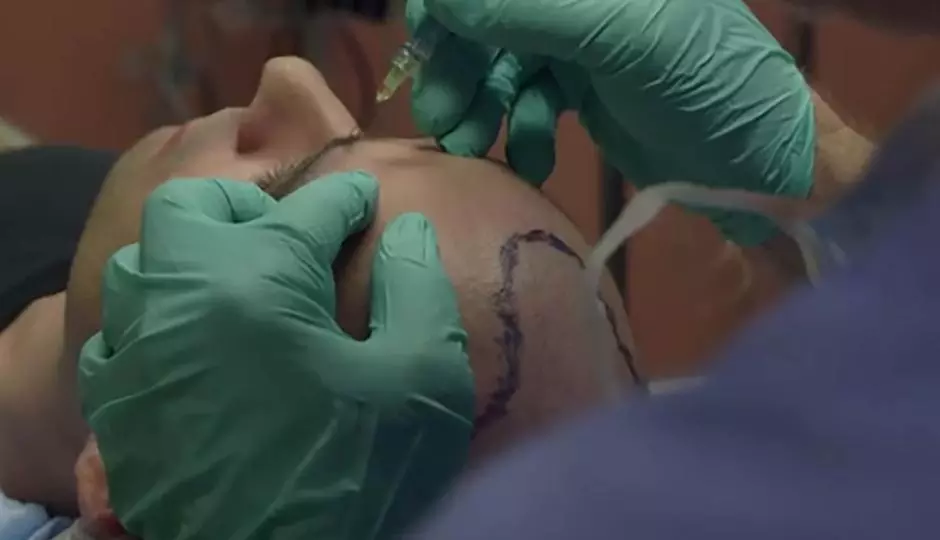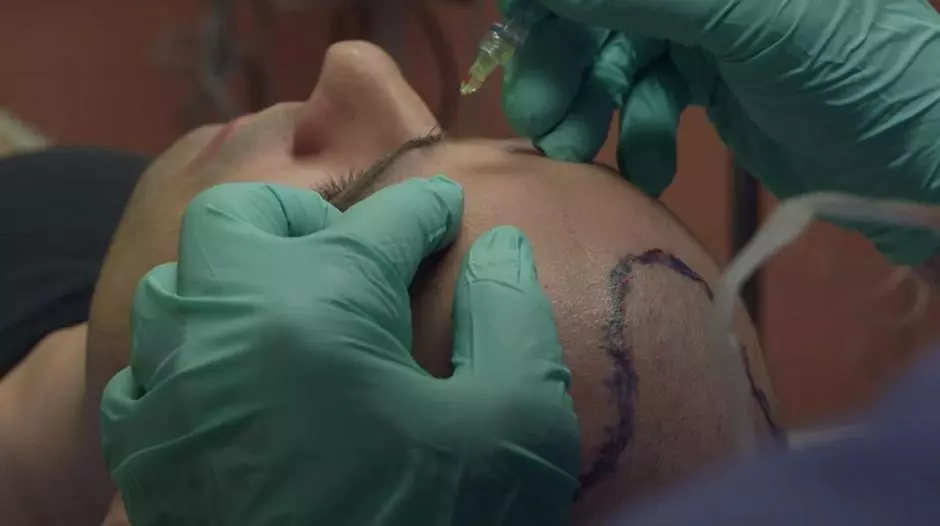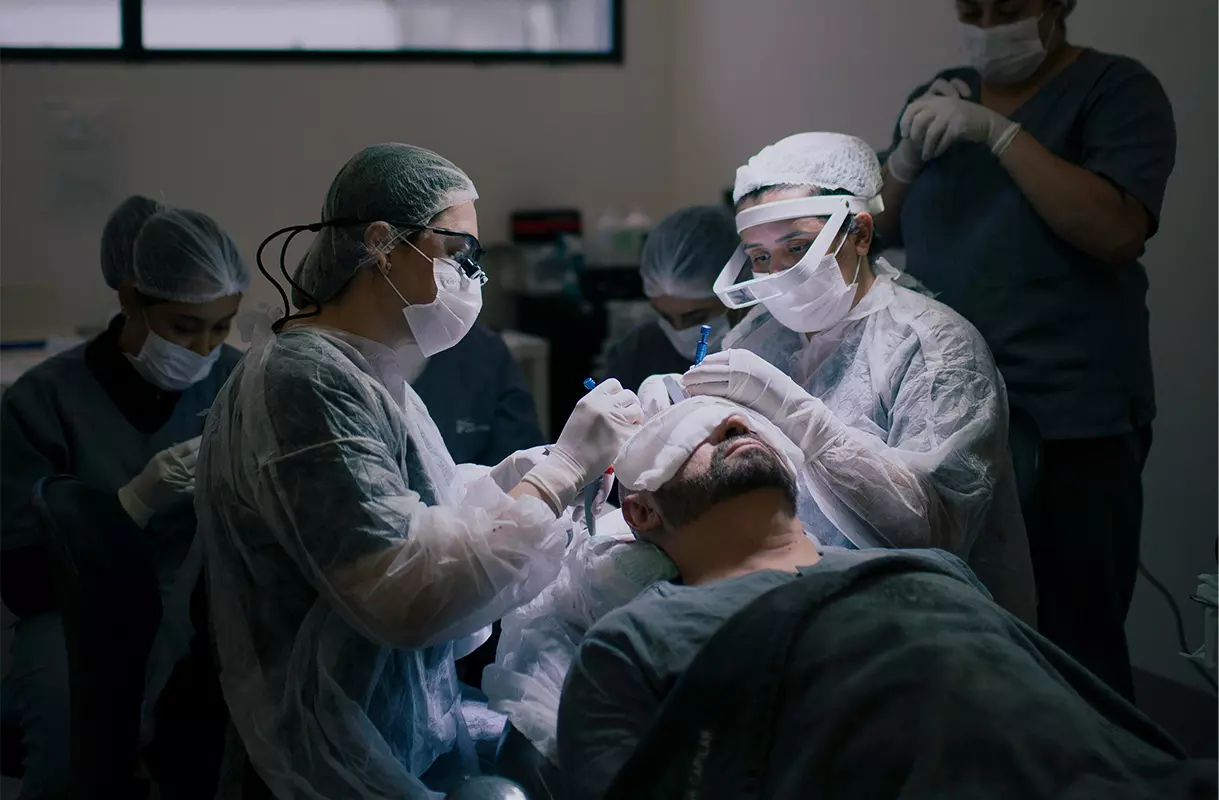At the Hair Transplant & Restoration Center, it’s our goal to make your experience as comfortable as possible. During both types of hair transplant surgeries, follicular unit transplant and follicular unit extraction, Dr. Gray will administer local anesthesia to numb the scalp using The Wand. View the video below to see Dr. Gray explain the process of using local anesthesia during a live hair transplant surgery.
Learn More About Local Anesthesia
About The Wand
The Wand is a computer-controlled anesthesia delivery system. By administering the local anesthesia very slowly, the discomfort associated with the injection is limited. The injection is made with a 30g needle. Any of the local anesthesia agents may be used with The Wand. The length of the block is then determined by which local anesthetic is used. For example, Marcaine lasts longer than Lidocaine.
Transcript
What we’re doing is giving local anesthesia to numb up his scalp and we are using an instrument called The Wand. It was actually developed for dentistry, so that it controls very accurately the rate of injection. So, if the tissue hasn’t expanded too rapidly you don’t have a lot of pain on injection. “Has it been painful to you?” “No”.
There are several nerves that we block. You can do a ring block on the forehead, but what we are doing today is blocking the auriculotemporal nerve which is right in front of the ear. We are blocking the zygomaticotemporal nerve right beside the eye, and then there are two nerves above the eye, the supraorbital and the supratrochlear nerve, so we are putting medicine in all of those places. This is Lidocaine 2% with Epinephrine.







